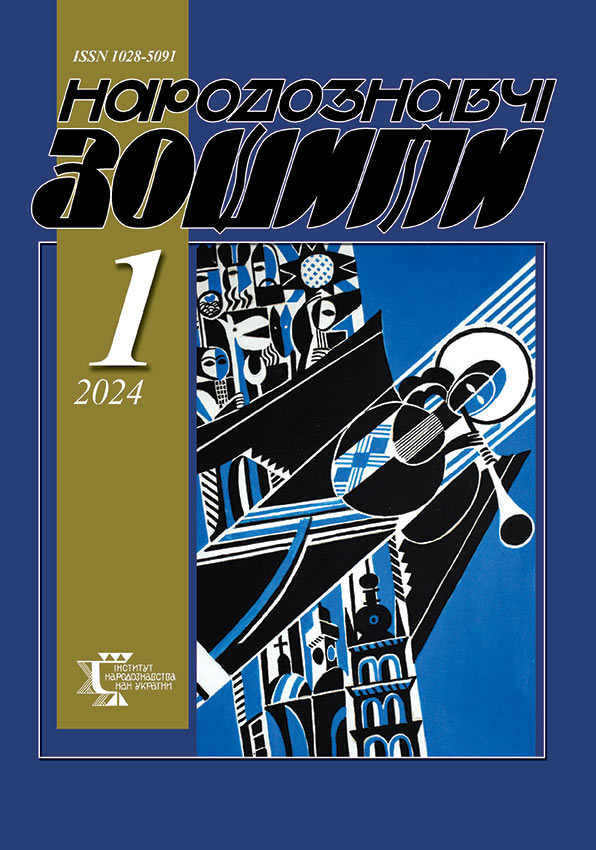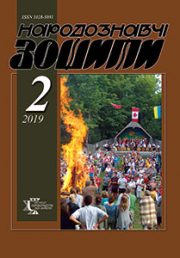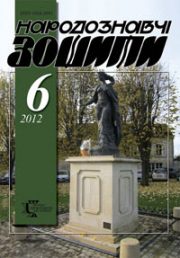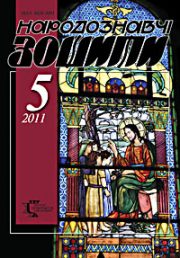2024 year, issue 1
The Ethnology Notebooks. 2024. # 1 (175). P. 1–258
DOI https://doi.org/10.15407/nz2024.01

Статті
HORBAL Маrіa
HOLIDAY IN DECEMBER IN LEMKIV REGION
42—55
VAKHNIANYN Anna
THE WORLD CONGRESS OF FREE UKRAINIANS: CRISES AND WAYS TO OVERCOME THEM
76—82
MARKHVINSKYI Ivan
UKRAINIANS IN BAVARIA: MIGRATION AND INTEGRATION ASPECTS (1991— 2015)
96—108
TARANETS Sergii, FYLYPENKO Artem
DEVELOPMENT OF THE AIR ASSAULT FORCES OF THE ARMED FORCES OF UKRAINE
131—144
SELIVATCHOV Miсhaеl, PUCHKOV Andriy
VASYL KRYCHEVSKY AS A RESEARCHER OF ART
145—153
PAVLYSHYN Anastasiia
ARTISTIC FEATURES OF MOSAICS AND CERAMICS IRENA ROMANA NOSYK
180—188
HULEVYCH Svitlana
REVIEW OF WORLDWIDE ACCEPTED COLOR CODING METHODS FOR PEOPLE WITH VISION PROBLEMS
199—204
SHUMEIKO Oksana
ACADEMICIAN MYKHAILO VOZNIAK AS A RESEARCHER OF DUMAS
211—219
ZAVADSKA Viktoriia
CHRISTMAS CONGRATULATIONS 2022—2024: FEATURES OF POETICS
220—235
Publications
Reviews
Fedorchuk Olena
A visual chronicle of the first half of the 20th century
246—250
Movna Ulyana
Calendar circle of peremysky village
251—252
Maksymchuk Oleksandr
Henry Moore: dimensions of creative character
253—255







